Dear creative friends,
Welcome to Issue No. 51 of the Studioworks Journal! Last month’s issue full or Rococo style and splendor truly inspired me and I have to admit it made an impact of choosing this month’s theme - Fashion! Let’s explore how art influences fashion and how fashion influences art! It’s a fascinating and playful romp of creative overlap, style crossing and color play!
Let’s put our fashion designer hats on and have some fun with this area of exploration.
xo,

P.S. A little note about my own relationship with fashion…know that I am NO fashionista. I’m a sweater, jeans and boots kinda girl in the winter and a long floral dress in the summer. I most prefer my soft, black yoga pants and my favorite sweatshirts BUT that doesn’t mean I don’t admire beautiful clothes, fabrics and accessories. So if you aren’t a fashionista either, then hey, I get it but whether we fully buy in or not fashion has been a quintessential element in the creative world since the beginning of human civilization, so go ahead and allow yourself to enjoy this little jaunt into the fashion world! ;) Let your inner child play dress up!
So you may be wondering, where do I start? To that, I say, wherever feels right to you. Each month we will have a theme, a creative affirmation, a power word, a color palette, sketchbook exercises, art projects, articles, recommended reading, and access to wonderful inspiration and resources. I want you to think of this as a delicious new magazine, you know the ones you occasionally splurge on, with soft, velvety pages, beautiful images, and inspiring content!
Each issue will invite you to explore your creative practice in whichever way works for you. Experience each issue at your own pace. Take what resonates with you and put the rest aside for another time.
Grab a cup of something lovely and dive in.
The love affair between fashion and art is undeniable. As with many great passions, it can be difficult to discern where one ends, and the other begins. Likewise, there are moments where the union is blissful and others where antagonism rules the day.
Art influences the entirety of human culture, from architecture and landscape to music, culinary styles, and our manner of adornment. For its part, fashion at its best is undeniably a visual art. Even at its worst, it tells something of the moment from which it sprung, adding to the human story. Just as with art, fashion is a way for people to express themselves and what they value, whether consciously or otherwise.
Throughout history, artists and designers have had notable collaborations. Sometimes deliberately through mutual agreement and shared effort, and other times without permission or with a clash of values and intentions. Regardless, it's a fascinating drama worthy of exploration.
Questions about what constitutes art have always been the source of lively debate. Despite this, many agree that art is something made without any practical use. Does this preclude fashion from being art? Hardly.
Whether designs are tailor-made by a couturier or stamped out by a cookie-cutter clothing factory, themes of color, design, texture, weight, and shape are decidedly superfluous, often impractical, and primarily intended for personal expression. Sometimes the message is one of beauty; other times, what’s desired is to shock. Still others, the point is to fade into the background, avoiding fanfare. Through a particular lens, any of these are viewable as art. Although, sometimes, that interpretation is more effortless, obvious, and intentional.
Since 1858 when fashion design became a mainstay of the world through the fateful act of Frederick Worth having his name sown on the garments he created, there have been manifold collaborations between artists and designers. That moment defined the difference between ready-made clothes and haute couture. Not surprisingly, artists have frequently been attracted to the latter, just as high-end designers readily draw inspiration from artists.
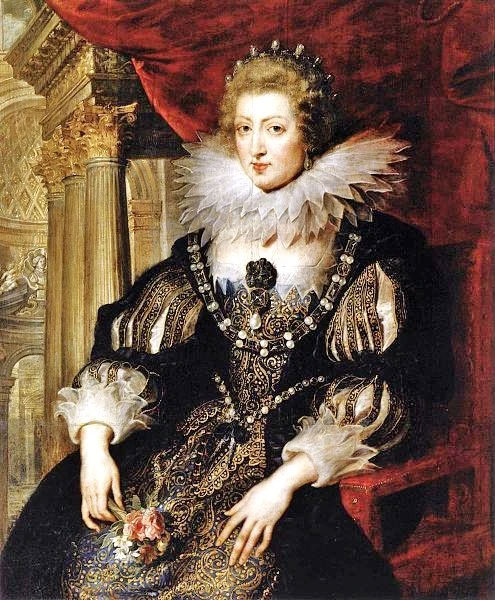
Anne of Austria
Peter Paul Rubens, 1622-25
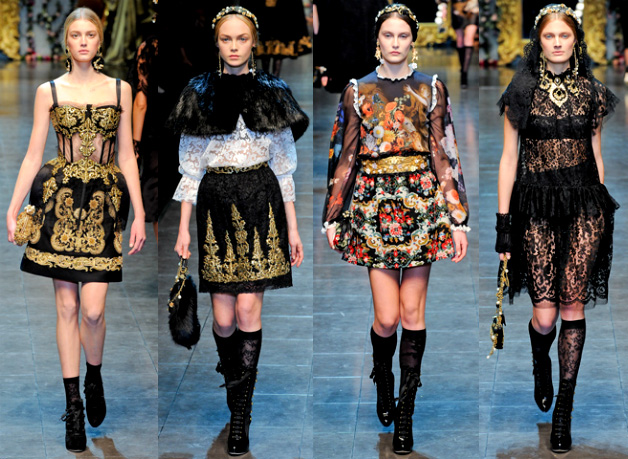
Dolce Gabbana Collection influenced by Rubens
There are many examples of designers using artists as their muse, from Valentino’s use of imagery inspired by Hieronymus Bosch’s painting The Garden of Earthly Delights in his Spring 2017 collection to Dolce and Gabbana borrowing from the Flemish painter Peter Paul Rubens when designing their Fall 2012 collection.
Still, a particularly juicy example is when an artist and designer met and actively collaborated, namely the partnership between Salvador Dali and designer Schiaparelli, which began with her winter 1936-1937 collection. This dynamic duo’s creations made lasting cultural and political reverberations revealing the power art and fashion can wield.
When the Duchess of Windsor, the sensual Wallis Simpson, donned a dress from the winter collection decorated with an enormous bright red lobster in an 8-page Vogue spread, the world took notice. Simpson, twice divorced, was engaged to Edward VIII, a union that met with profound public disapproval. Her wearing the lobster dress, rife with innuendos from its placement between the legs to the crustacean’s aphrodisiacal qualities, along with Dali’s belief in the lobster’s sexual symbolism, cemented Simpson as an object of scorn. This disdain only worsened when her husband chose to abdicate the British monarchy.
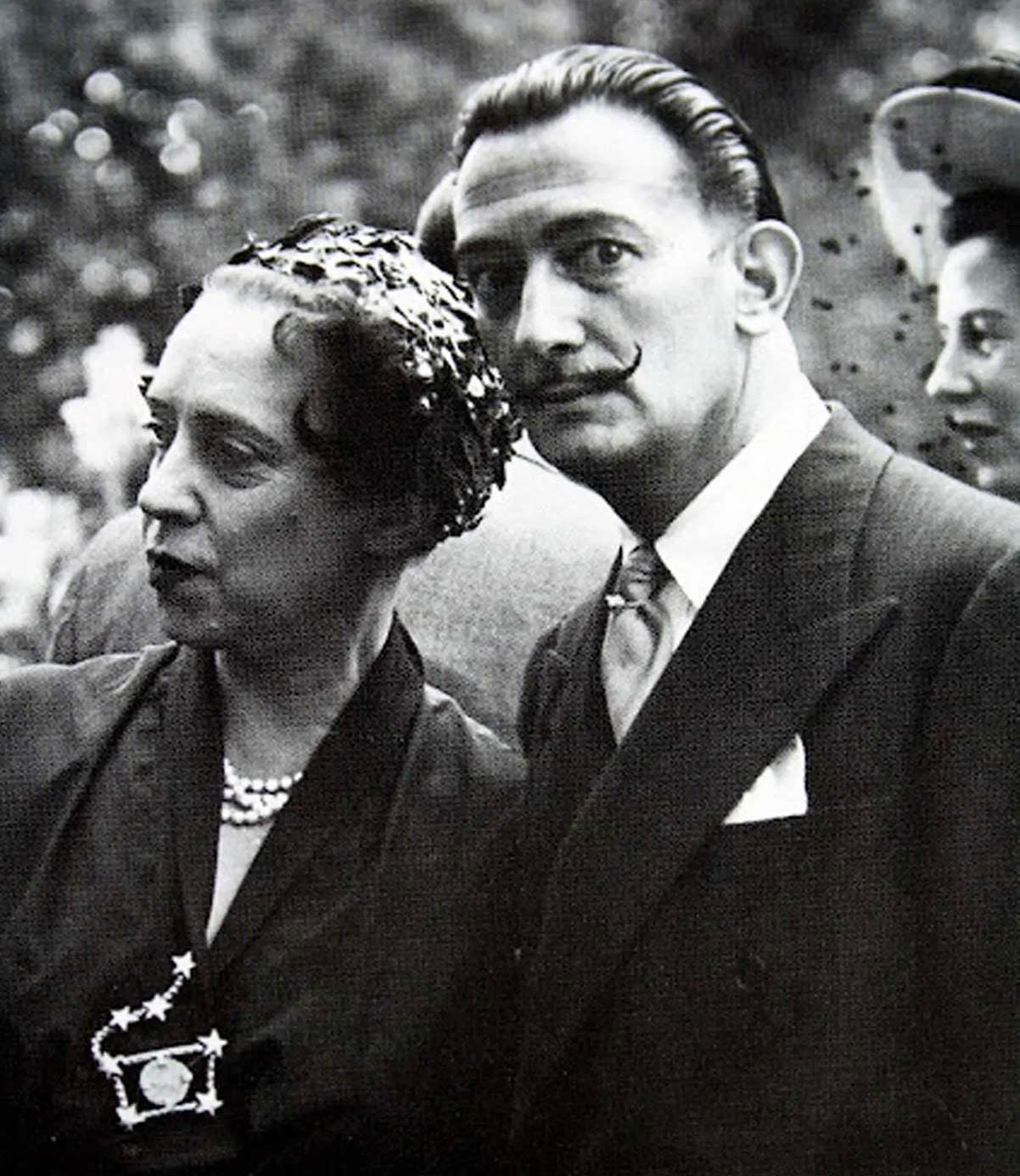
Salvador Dali and Schiaparelli
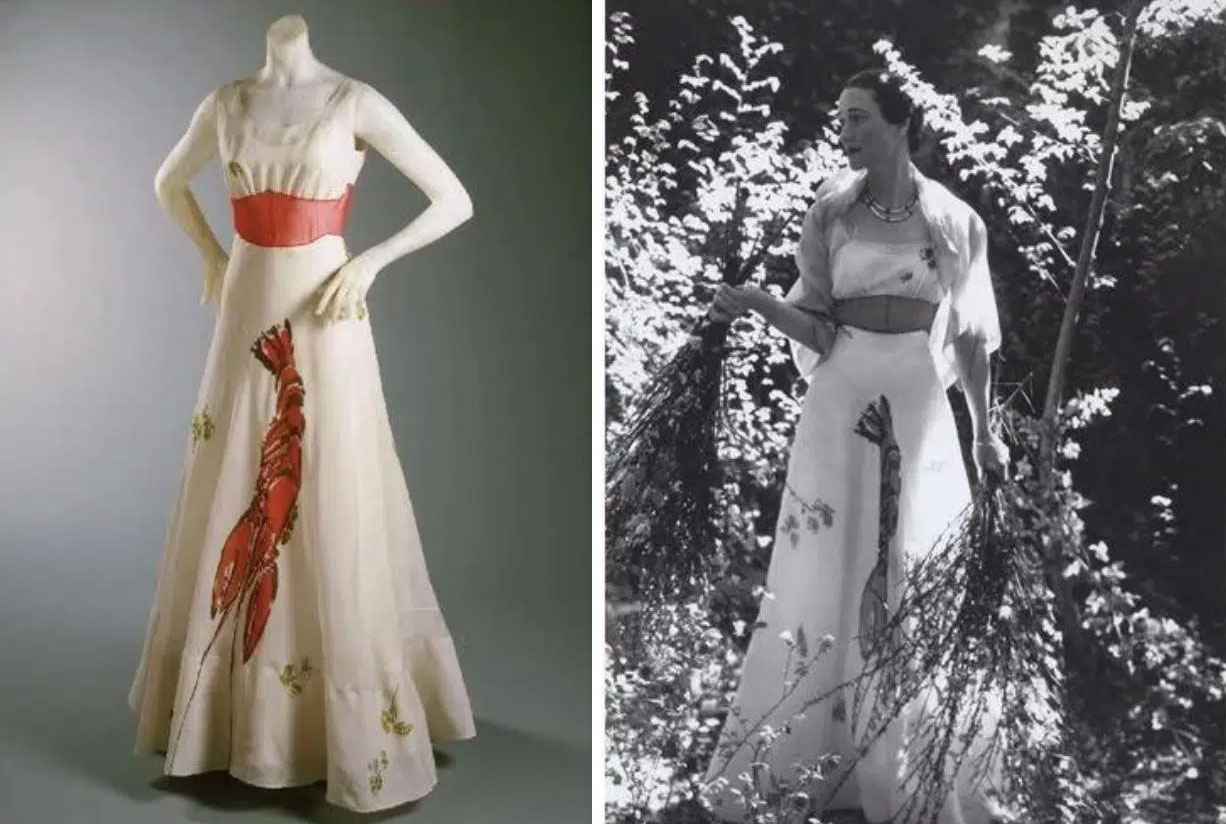
Wallis Simpson
However, boldly wearing the dress made Wallis Simpson an avant-garde example of a woman willing to own her sexuality and refusing to kowtow to public opinion. For Dali, it was an opportunity to push forth his emblems of daring sexuality. For Schiaparelli, it was in keeping with her love of shock value and interest in challenging beauty norms and gender conventions.
The lobster dress has continued to inspire into modern times with reimaginings by Miuccia Prada for a retrospective at the Metropolitan Museum of Art in 2012 and by Bertrand Guyon for a Spring 2017 haute couture collection. This lasting cultural relevance is likely due to how well the dress reflects the complex dynamics between the artist, designer, wearer of fashion, and society as a whole.
Fashion and art have always danced together, delighting in blurring the lines between them and defying definitions. From ornate headdresses, elaborately beaded belts, and moccasins to the runways of Milan, it’s clear that once we meet our survival needs, our creative ones can and will flourish.
At our best, humans make art out of each segment of life. We don’t need to differentiate between a canvas and a dress; we can use each to express something unique and vital about ourselves. Fashion and art beautifully intersect when we step into the flow and let all mediums add their voice to our story.
Despite their mutual attraction, fashion and art also have a natural antagonism. Artists often strive to make pieces with enduring value, hoping to create a timeless oeuvre. Contrarily, designers operate in a constantly changing world and live off the perpetual motion of seasons and styles.
One is ephemeral, and the other seeks permanence. Still, this polarity can be the very thing that makes for a beautiful union. We often learn the most from our greatest challenges, and seeing the value in disparate views expands our vision. An expanded vision is always beneficial for artists of all stripes.
When we pause to consider how fashion might speak to us, informing our art, the possibilities only find limits at our imaginations' borders. An obvious starting point is to tap freely into the polarity between change and permanence, allowing ourselves to play with the edge farthest from where we currently stand.
For example, suppose your work is generally very studied, serious, and painstakingly created to last. In that case, you may benefit from cutting your ordinary tethers. This process might look like speed painting, creating seasonal palettes, working with only a small selection of colors, using very small or huge canvases, and painting outside or in a different location than you’re used to. The point is to shake things up, challenge yourself, and have fun! Creative muses are often attracted to play.
On the other hand, if you’re prone to churning out high quantity but perhaps less than stellar quality, you could try adding some gravity to your process. In this case, you might double the time you typically spend on a project, commit to working on a few studies for your next piece, think about your intention, and clarify the message you hope to convey. The goal here is to deepen your experience, adding meaning and value to your creations.
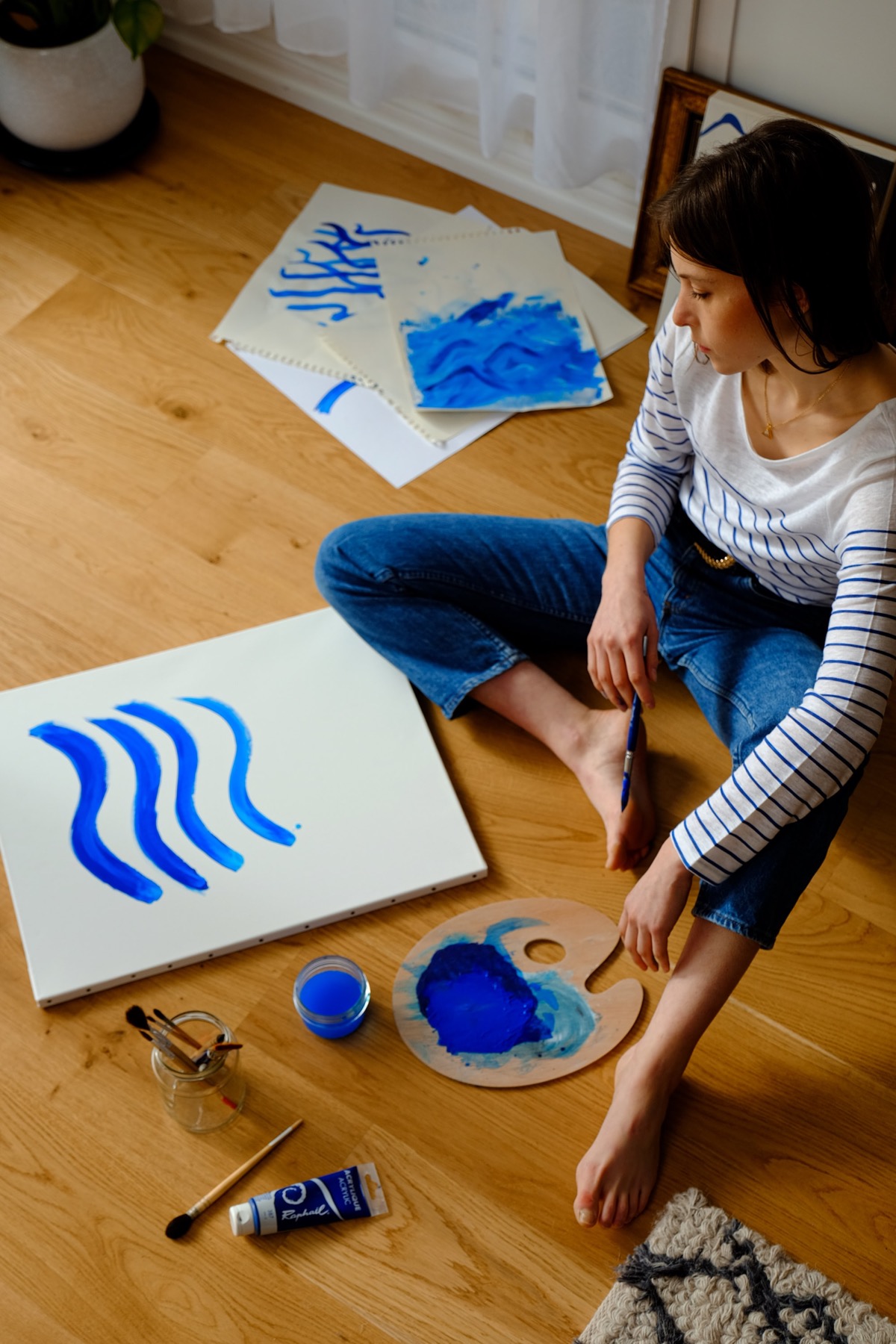
It's interesting to view these processes as mirroring some of the differences between Haute Couture and disposable fashion. We don’t always want to wear something so beautiful or rare that we fear destroying it with every step. Likewise, we don’t typically have the desire to convey messages of cheapness or lack of originality. This is a good reminder that there are benefits to either pole. It also encourages us to remember the beautiful swathe of just right or the Goldilocks’ happy medium, which lies somewhere between them.
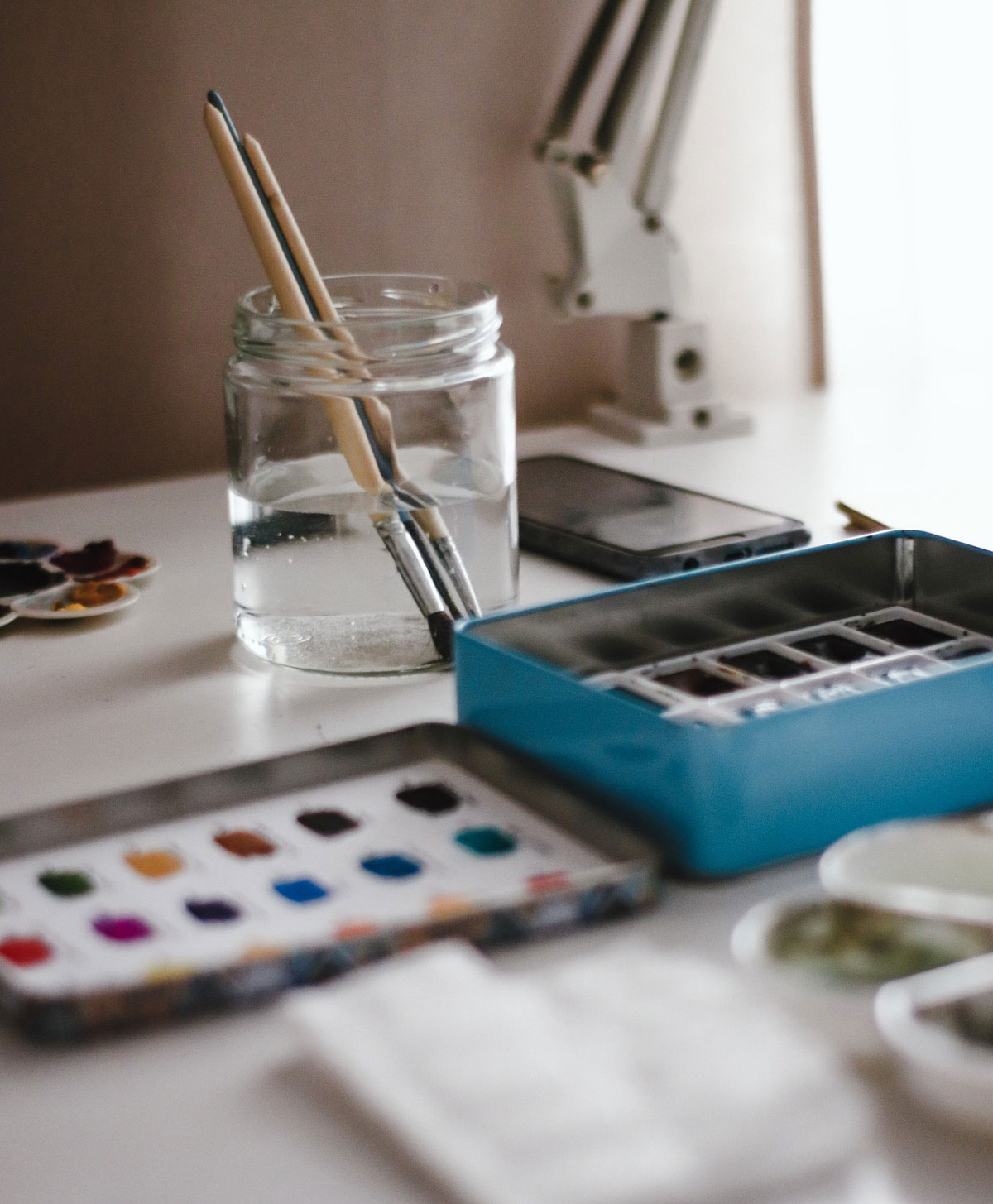
In the design world, they rely on fashion forecasts to determine the coming season’s styles. By compiling the colors, textures, and pattern motifs before beginning to create, the process is informed and directed by what are considered the most desirable aesthetics of the moment.
Every area of popular culture undergoes exploration to determine precisely the most attractive features to include, from music to movies to interior design. The new season's character is born through a complex assessment by designers, marketers, and followers of celebrity activity. Thus, the designs are highly intentional and have the best chance of being desirable to fashionistas.
As artists, we can glean valuable skills from this approach, from the benefits of working in seasons to the value of carefully laid plans to knowing who we intend our audience to be. Our forecasting could draw on ideas from the world at large, or they could be more of an introspective process that enables us to project highly personalized images, values, and meanings. Regardless, it’s a great tool to forecast where you want to go and why.
The more meaning and inspiration we garner from the world, regardless of the source, the more creative we become. Looking to fashion for inspiration may seem superficial at first glance, but upon further reflection, it’s clear that it's a treasure trove of ideas.
The way we dress is meaningful to us. It can convey what we value, what we’re attracted to, how we feel about ourselves, and how we’d like people to view us. These same notions can also apply to our art. Dressing to impress can apply to your wardrobe and designs, and mastering both makes you a force to be reckoned with.
Raise your hand if you ever pretended to be a fashion designer when you were a kid! (My hand goes straight up.) Yes, I ran a very important fashion design empire when I was 10, well, at least I liked to pretend I did. I would get my friends to sit around with me and sketch out glamorous dresses on elongated stick figures. We would do it for hours, making believe that we were designing for the most influential celebrities and preparing tirelessly for the “big fashion show” coming up in New York or Paris! It was fun right? Well guess what? Now, as an adult we can still get inspired by fashion but rather than flipping through the latest Vogue, let’s go to our closets for inspiration about our own personal style as an artist.
As an active creative, one of the most important things you can develop is your own personal style. Your style is a reflection of your unique voice, your perspective on the world, and the things that inspire you. It's what sets you apart from other artists and helps you create a distinctive body of work that's instantly recognizable. But how do you go about developing your personal style? One way is to take a look at what's in your closet.
Go on, get up and go open up your closet. Don’t condemn the mess or the lack of organization (if this is you, I get it.) Instead, look at the colors, patterns and styles that jump out at you!
Your clothing style is a reflection of your personality, your tastes, and the things that you feel comfortable in. By examining the colors, textures, and patterns that you're drawn to, you can gain insight into the elements that make up your personal aesthetic. Here are some tips on how you can use your closet to learn more about your personal style as an artist:
By taking the time to examine what's in your closet, you can gain valuable insights into your personal style as an artist. Use the colors, patterns and textures to inform the choices you make in your artwork. And remember, your personal style is always evolving, so don't be afraid to experiment and try new things. The most important thing is to create art that reflects your unique perspective and voice, and that's a style that's truly your own.
P.S. If you have resorted to living in gray sweatpants and sweatshirts aka the Covid look, I totally understand, so head on over to Pinterest and pin all the clothes that you would love to dress in if you were so inclined. Make a board made up of all the delicious colors, patterns and style you love! This can give you similar hints to your creative style and preferences.
Get those journals and sketchbooks out and get ready to do some self-reflection and writing. Try not to judge what comes out of these writing sessions. Don’t worry about punctuation or grammar or any of that. You can even just make lists if that suits you better.
Take a moment to get quiet. Still yourself by doing some gentle breath work. Light a candle. Now ask yourself some questions to reflect upon -
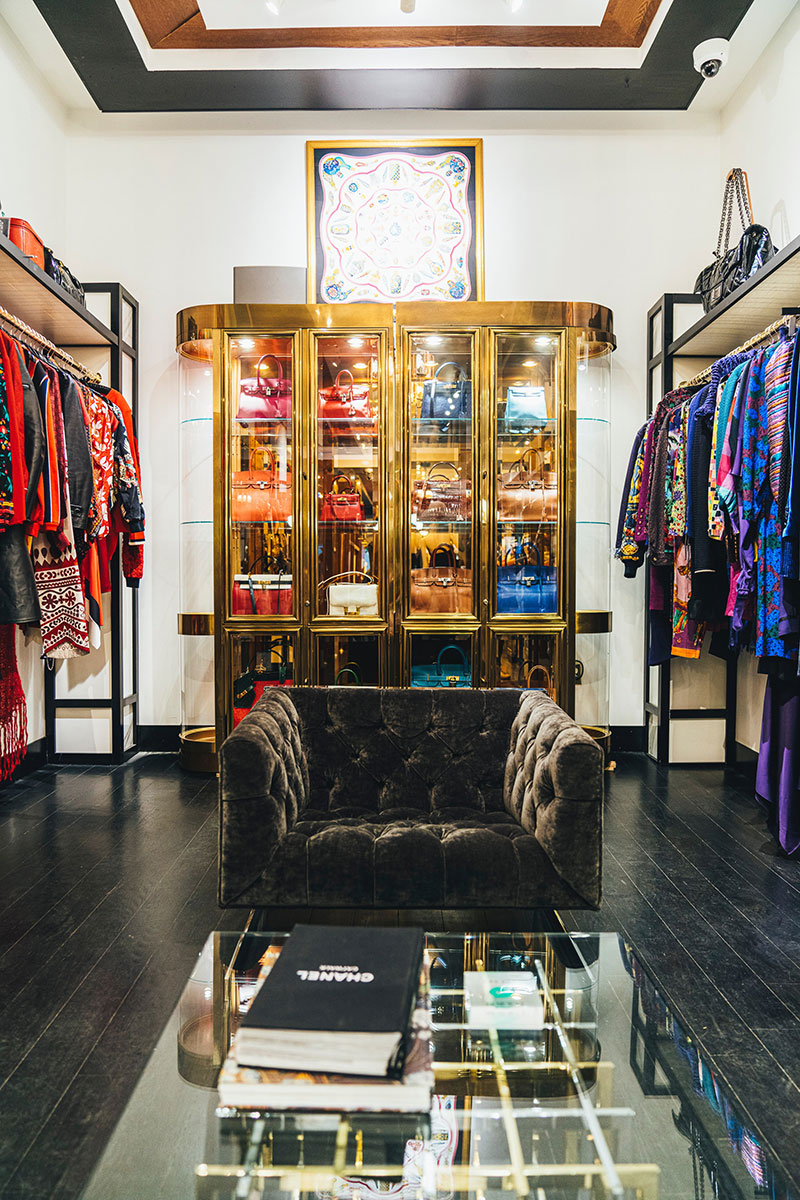
As a working artist, the word "style" means a lot to me. I think of style as the way in which I express myself through my art, and it's something that's unique to me and my individual perspective. It's how I choose to approach a piece, what techniques and materials I use, and the overall aesthetic that I strive to achieve. Style is not something fabricated before I work, it is something that evolves as I work.
So, if you are new on this creative path, trust that you don’t need to actively invent your own style. It is there inside you, waiting to be brought forth and expanded upon. Yes, you may see it in your clothes or the things you adorn yourself with but ultimately it is your very own energy signature that begins to take shape the minute you begin to create art and it will continue to evolve the more you show up in the studio. So trust this. Trust that you are as unique as your fingerprints and this will reveal itself in your work. Also know that your style is influenced by the things you see, read and experience. It is not a static thing but rather referential, pulling in elements from the world around you. So, let it be just that…malliable, mercurial, fluid. It will change as you change and that’s exactly what it should do.
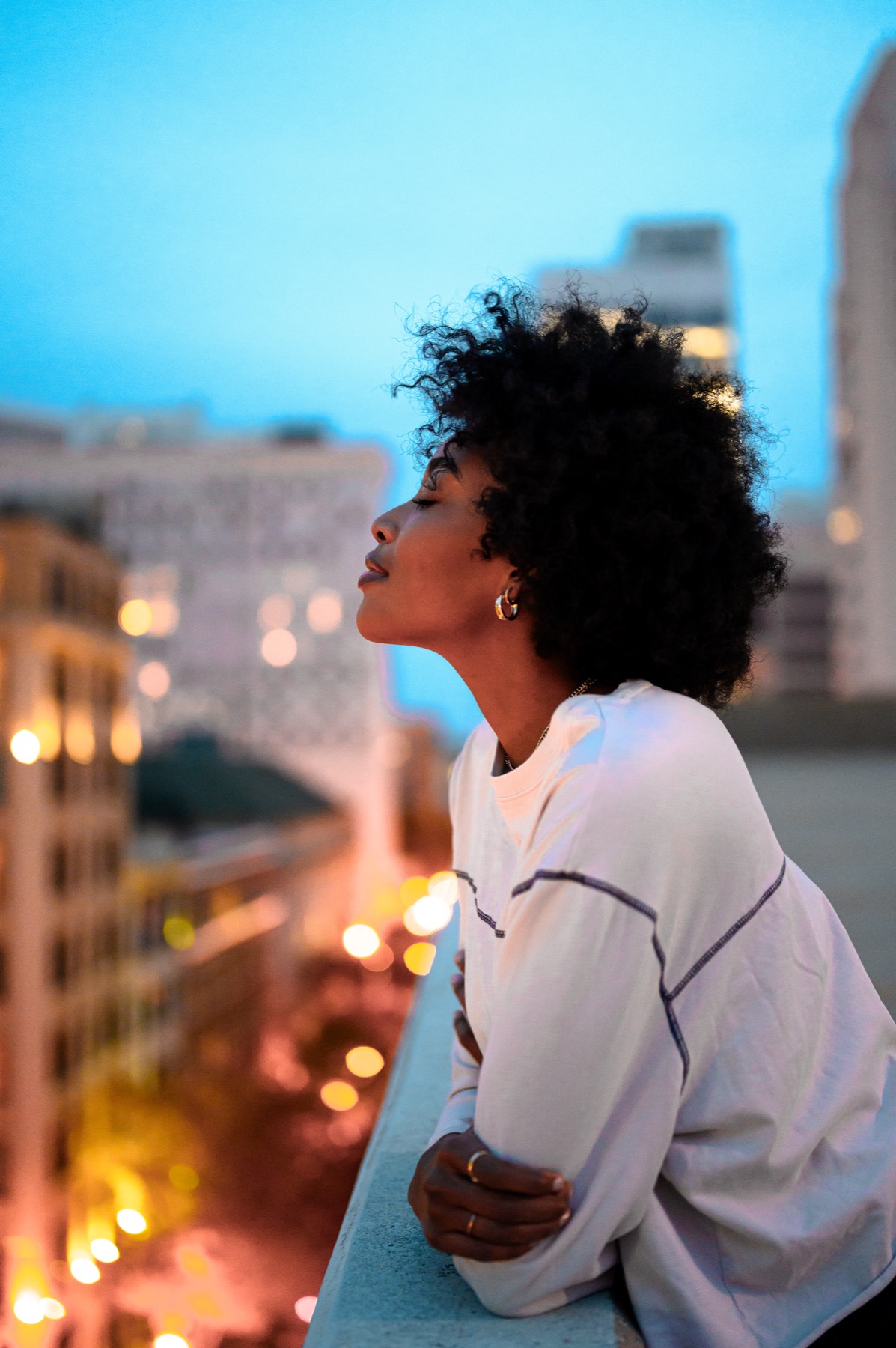
I am sharing this beautiful Meditation from one of my favorite meditation masters - Rachel Hillary. Since we are discussing fashion, style and our creativity I thought it only fitting to have our monthly meditation about pulling energy from our Solar plexus since this is where we stoke the creative flame and harness energy to create! Give yourself 20 or so minutes to experience this one.
Rachel will share a little about this experience -
This meditation takes place around a beautiful campfire in the middle of the woods. To the sound of nature and our fire burning. Here we will spark the flame of confidence within you, and allow your light within to shine brightly outwards.
lots of love,
Rachel
Each month we will have a positive affirmation. I recommend you print out this affirmation and put it in your sketchbook or somewhere in your studio. Recite the affirmation out loud each time you show up to create. Saying words aloud is powerful and can begin to re-write some of our own limiting beliefs or calm our fears. Try it now…
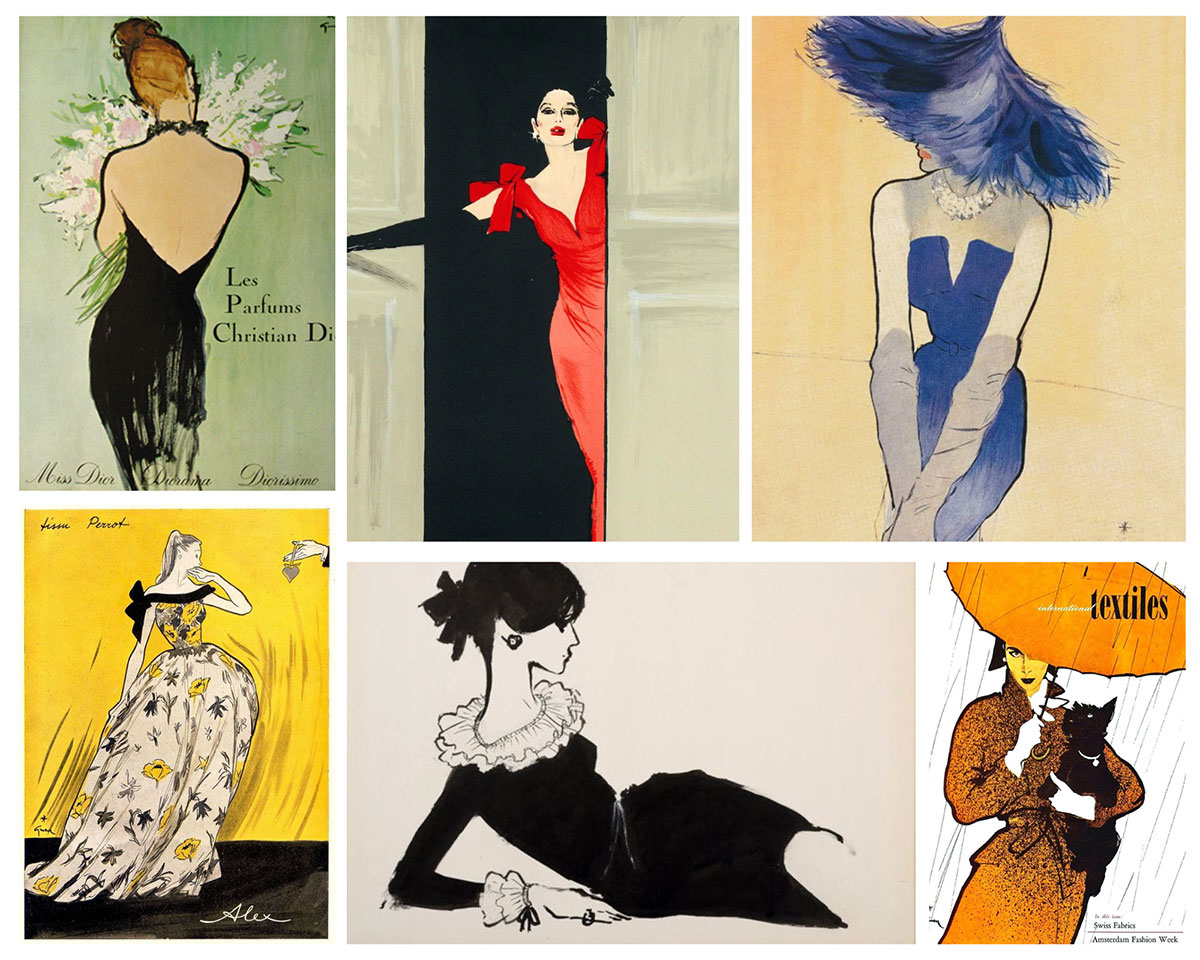
This month, I am inspired by the wonderful bold colors of our master artist, René Gruau. His color palette was often characterized by bold and contrasting colors, with a particular emphasis on black and white. He frequently used a limited color palette, relying on strong contrasts to create impact and depth. Some of his most iconic works feature a combination of black, white, and red, with the occasional addition of a bright, saturated color like blue or yellow. His use of color was often minimal and highly strategic, with each color was carefully chosen to convey a particular mood or tone. In general, Gruau's color choices were highly graphic and modern, and contributed to the distinctive, immediately recognizable style for which he is known. So let’s play around with this color palette and see how it feels!

As always, work with colors that call to you and never doubt your creative intuition. Your colors may look entirely different and that’s ok.
For this issue, I discovered an amazing fashion illustrator to share with you - René Gruau! Learning more about the life and work of this fabulous artist promises to be an interesting and fun exploration. Gruau was a prolific and influential artist, known for his bold and innovative illustrations that graced the pages of some of the world's most prestigious fashion magazines. His iconic style captured the essence of the post-war era, and his images continue to inspire contemporary artists and designers today. Let’s learn more…
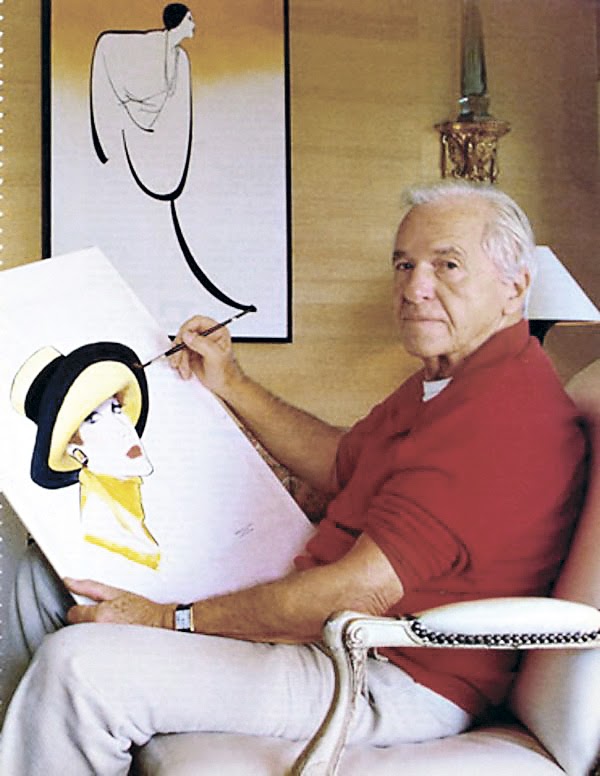
Rene Gruau was a renowned fashion illustrator and graphic designer known for his elegant and sophisticated artwork that captured the essence of the fashion world in the mid-20th century. Born in Rimini, Italy in 1909, Gruau grew up in Paris and showed an early interest in art and fashion. He studied at the Ecole des Beaux-Arts and began his career as a freelance illustrator in the late 1920s.
Gruau's breakthrough came in the 1940s when he began working for Dior, creating iconic illustrations for the fashion house's advertisements and promotional materials. His distinctive style, which blended bold, graphic lines with a sense of fluidity and movement, became synonymous with the high fashion of the era.
In addition to his work in fashion, Gruau was a prolific graphic designer, creating advertising campaigns for companies such as Air France, Martini, and Dunhill. His graphic style was similarly bold and expressive, with a sense of dynamism and energy that was well-suited to the advertising world. He was also a prolific poster artist, creating bold, eye-catching designs for films, exhibitions, and other cultural events.
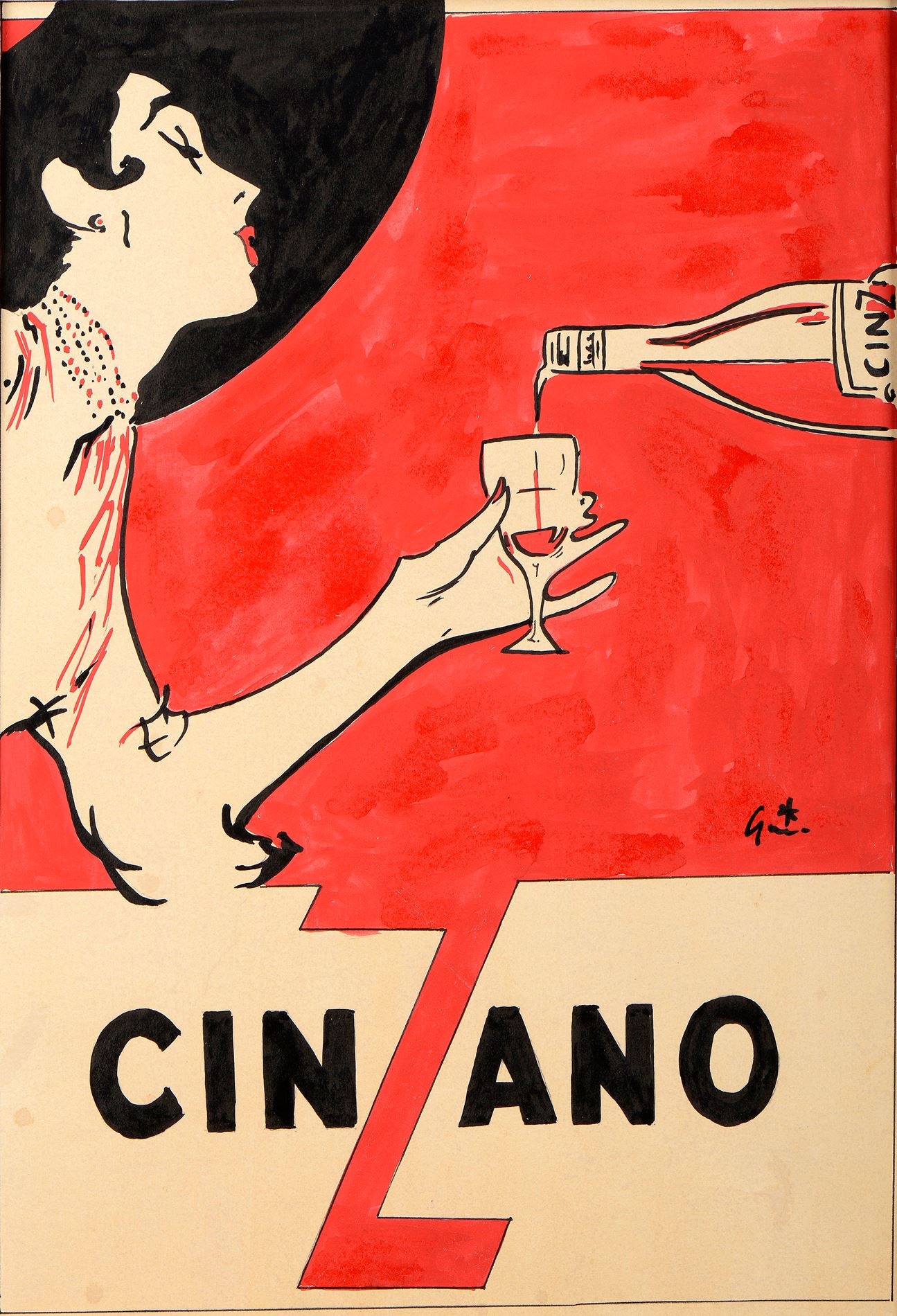
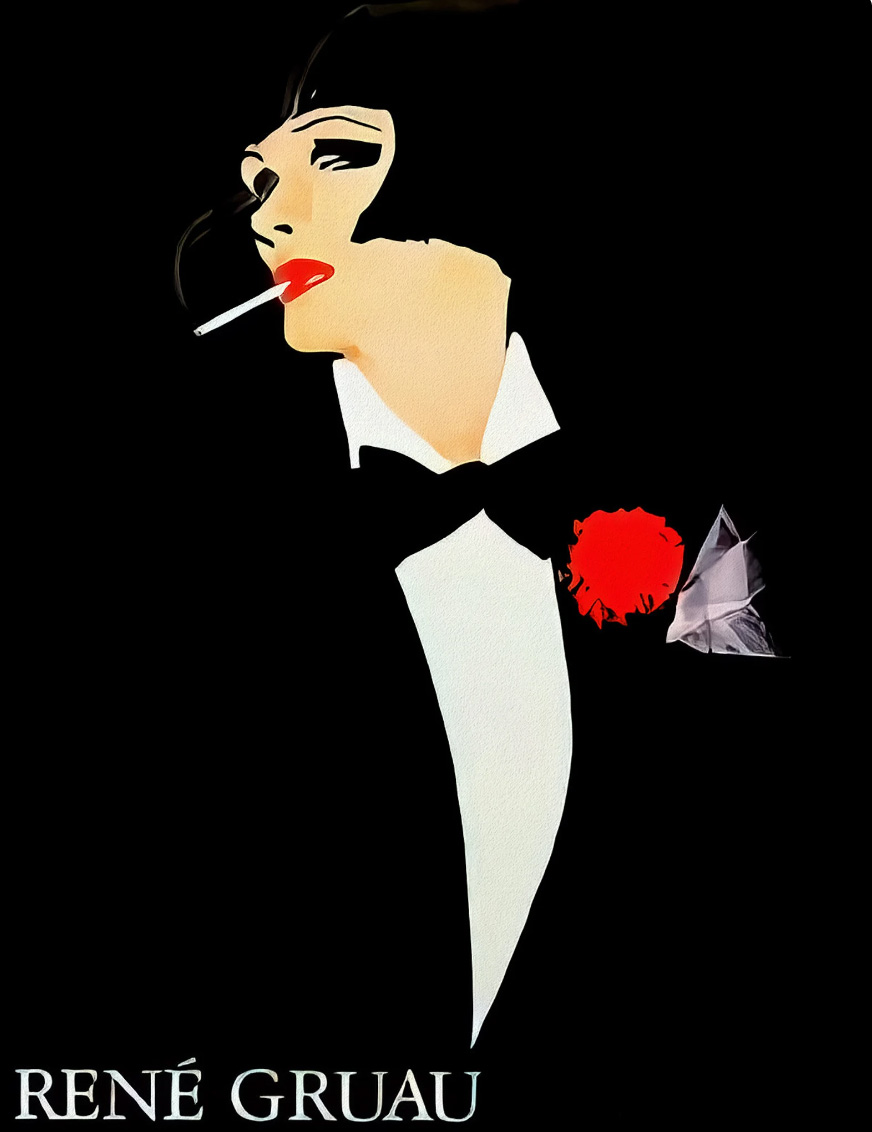
Gruau's work was celebrated throughout his career, and he received numerous awards and honors for his contributions to the worlds of fashion and design. In 1950, he was awarded the Neiman Marcus Fashion Award, and in 1974 he was made a Knight of the Legion of Honor, the highest honor in France. His artwork has been exhibited in museums and galleries around the world, and his illustrations and designs continue to influence and inspire artists and designers to this day.
Rene Gruau's legacy as an artist and designer is one of timeless elegance and sophistication, blending bold graphic design with a sense of fluidity and movement that captures the essence of the fashion world of his time. His contributions to the worlds of fashion and design have left an indelible mark on the industry, and his artwork continues to be celebrated and appreciated by art lovers and fashion enthusiasts around the world.
Rene Gruau created an extensive body of work throughout his long career as an artist, fashion illustrator, and graphic designer. His distinctive style, characterized by bold, graphic lines and a sense of fluidity and movement, captured the essence of the fashion world in the mid-20th century, and his work remains highly influential to this day.
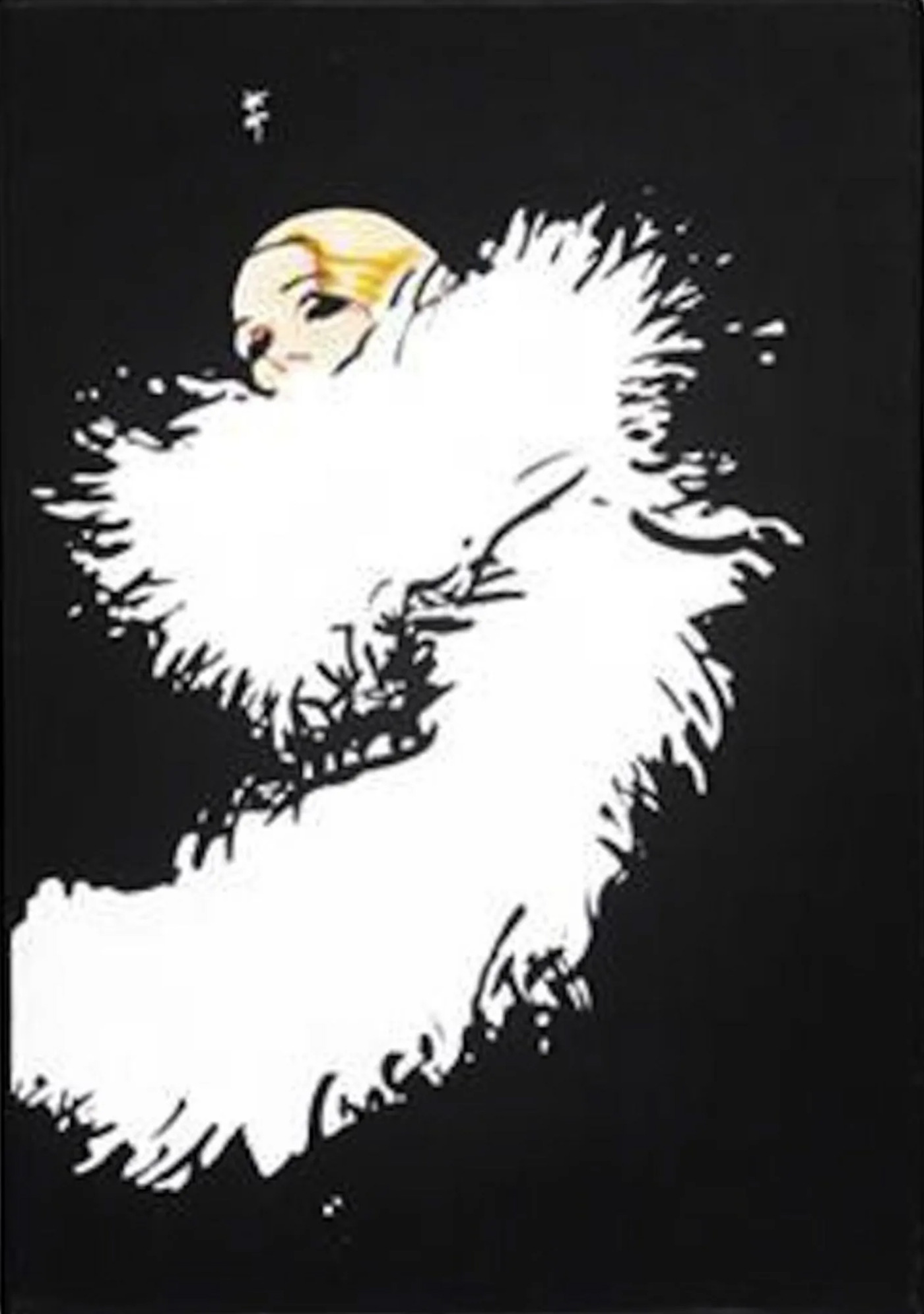
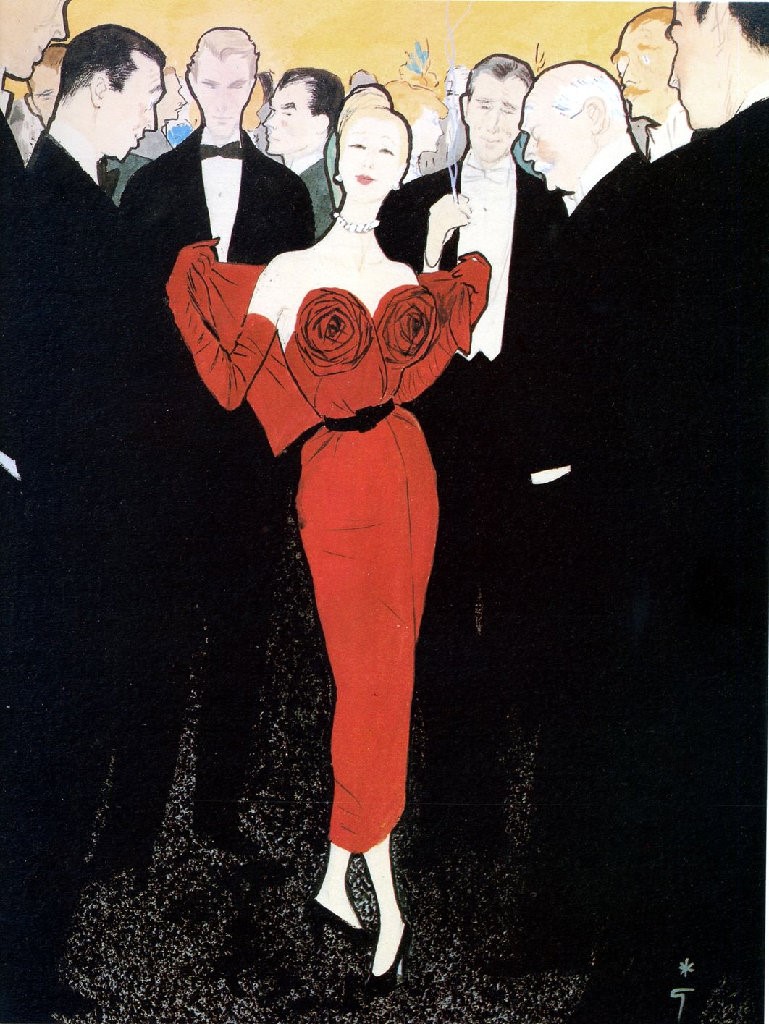
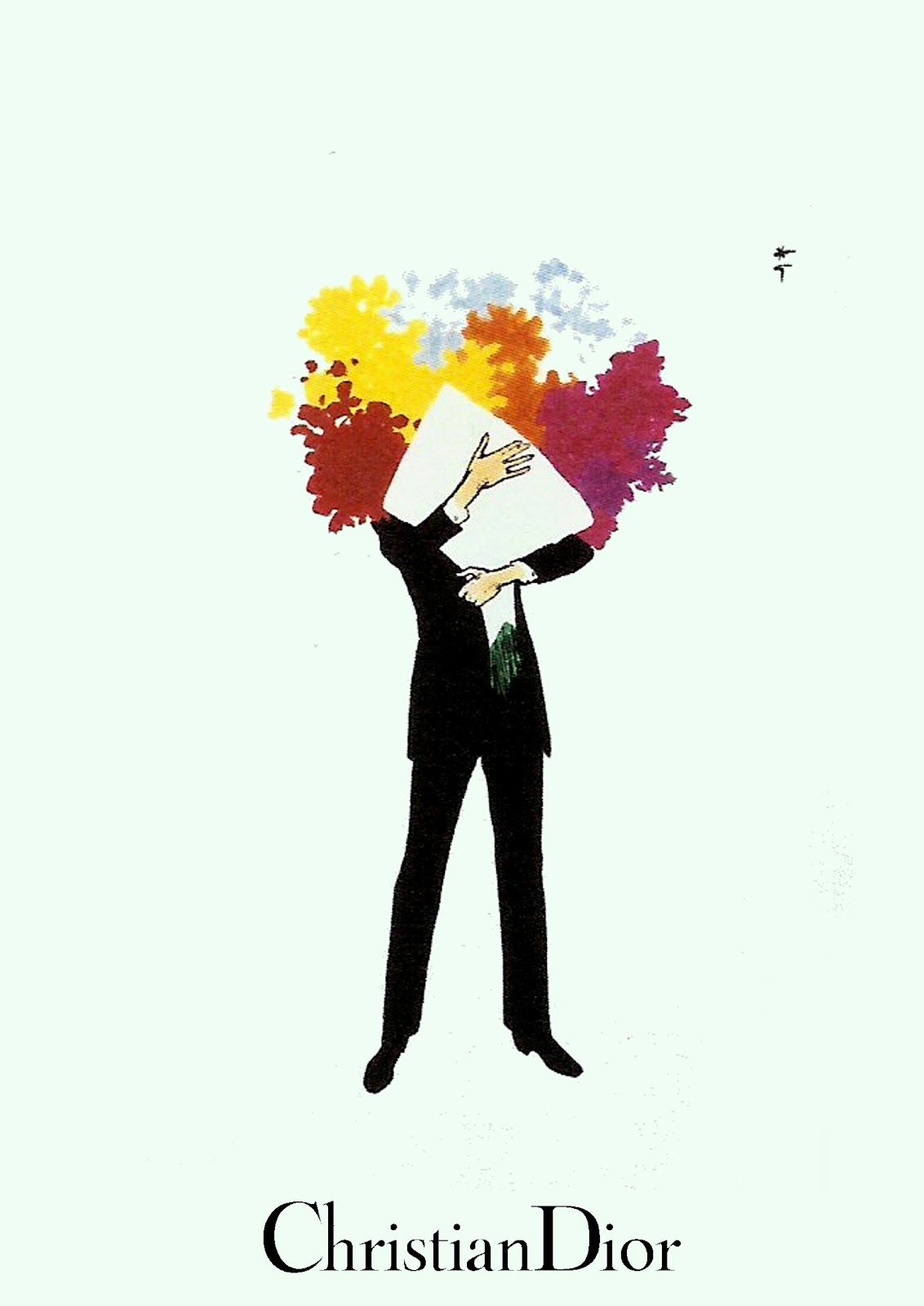
As previously mentioned, some of Gruau's most important works were his series of illustrations for Christian Dior, which he began creating in the 1940s. These elegant and sophisticated illustrations helped to define the look of French couture in the post-war era and were instrumental in establishing Dior as a leading fashion house. Gruau's illustrations for Dior were featured in numerous advertisements, promotional materials, and editorial spreads, and helped to establish him as one of the most sought-after fashion illustrators of his time. He went on to work for other major fashion houses such as Balenciaga, Balmain, and Givenchy.
Another important body of work by Gruau is his series of graphic designs and advertising campaigns. His bold and expressive designs, characterized by a sense of dynamism and energy, helped to redefine the visual language of advertising and established him as a leading graphic designer. Gruau created campaigns for companies such as Air France, Martini, and Dunhill, and his iconic designs continue to influence and inspire graphic designers to this day.
Gruau was also a prolific poster artist, creating bold and eye-catching designs for films, exhibitions, and cultural events. His posters were characterized by his distinctive style, blending bold graphic lines with a sense of fluidity and movement, and helped to establish him as one of the leading poster designers of his time.
In addition to his work in fashion illustration, graphic design, and poster art, Gruau also created numerous artworks in other mediums, including painting and sculpture. His works are characterized by a sense of elegance and sophistication, and reflect his deep understanding of the fashion world and its visual language.
Overall, Rene Gruau's most important works include his iconic illustrations for Christian Dior, his groundbreaking graphic designs and advertising campaigns, and his bold and expressive poster art. His legacy as an artist and designer remains highly influential, and his works continue to be celebrated and appreciated by art lovers and fashion enthusiasts around the world.
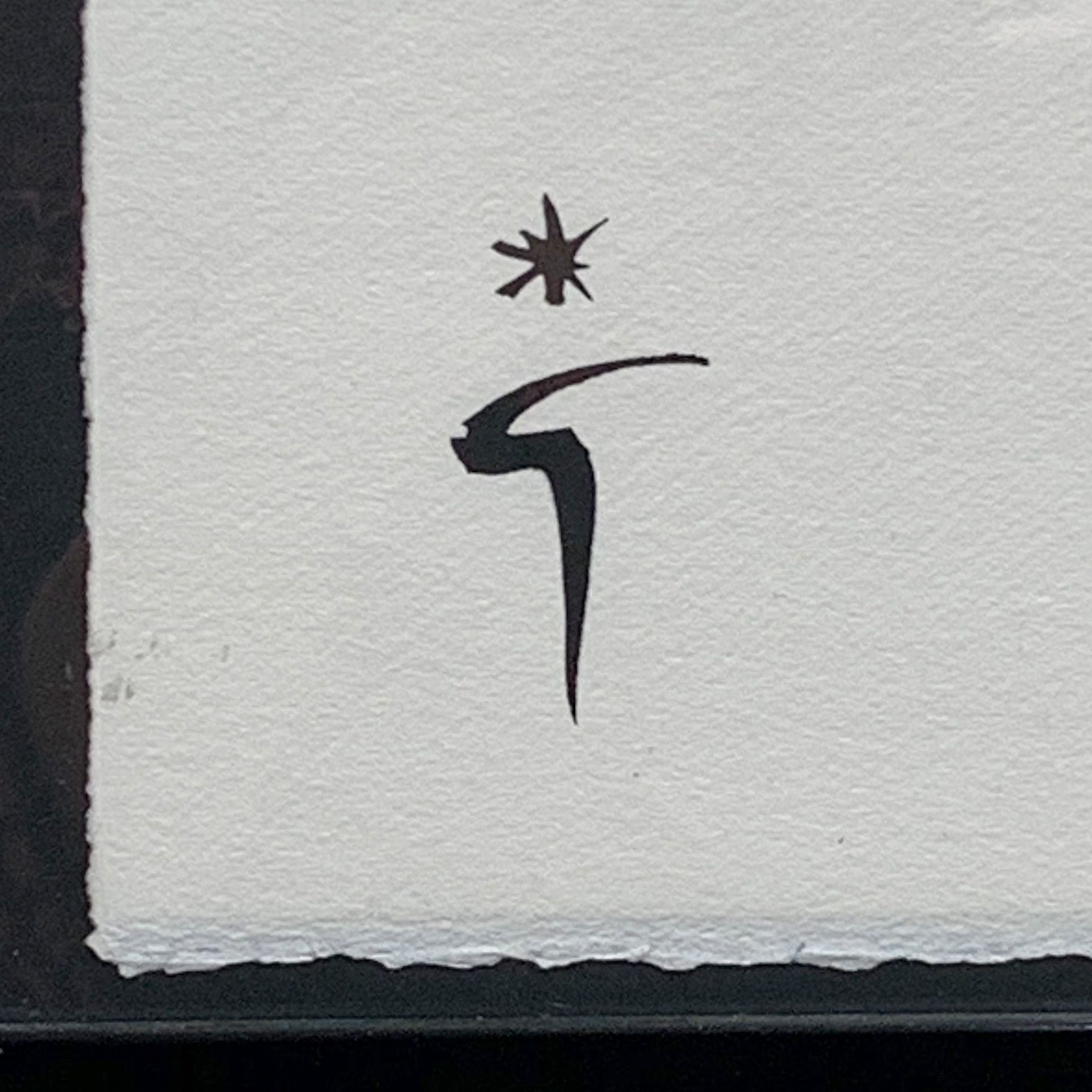
Rene Gruau's creative process and techniques varied depending on the project he was working on, but he was known for his ability to create bold, expressive illustrations that captured the essence of his subject matter. He often started with a rough sketch to establish the composition and basic shapes, and then built up the details and textures with layers of paint, ink, or other media. Gruau was a master of using negative space to create contrast and drama in his images, and he frequently incorporated calligraphic lines and bold, flat areas of color to create a graphic, almost poster-like quality to his illustrations. He was also skilled at conveying movement and energy in his work, whether depicting a flowing dress or a dancing figure.
Rene Gruau was influenced by a number of different artists throughout his career. Some of the most notable include:
Toulouse-Lautrec - Gruau was inspired by the graphic, bold designs of Toulouse-Lautrec's posters and advertisements, and his work is often compared to that of the famous French painter.
Cocteau - Gruau was heavily influenced by Jean Cocteau's work, particularly his use of line and his ability to convey movement and emotion through simple, expressive forms.
Matisse - Gruau admired Matisse's use of color and pattern, and was particularly drawn to his later cut-out works, which he saw as a form of abstract graphic design.
Paul Poiret - Gruau worked as a fashion illustrator for the designer Paul Poiret early in his career, and was greatly influenced by his use of bold, colorful fabrics and unconventional shapes.
Erté - Gruau was a contemporary of the Art Deco artist Erté, and the two shared a similar sensibility and style, particularly in their use of line and pattern.
These artists, among others, helped to shape Gruau's distinctive aesthetic, and contributed to his development as a pioneering figure in the world of fashion illustration and design.
Check out the beautiful Pinterest board of René Gruau’s illustrations. Pick one you really love and do a study of it or create something inspired by that piece! Have fun stepping into his designer shoes and experimenting with his style! Notice his graphic lines and simplification of form. I had a ball creating this one! Recorded the process too! Enjoy!
You can watch me create my own study below...
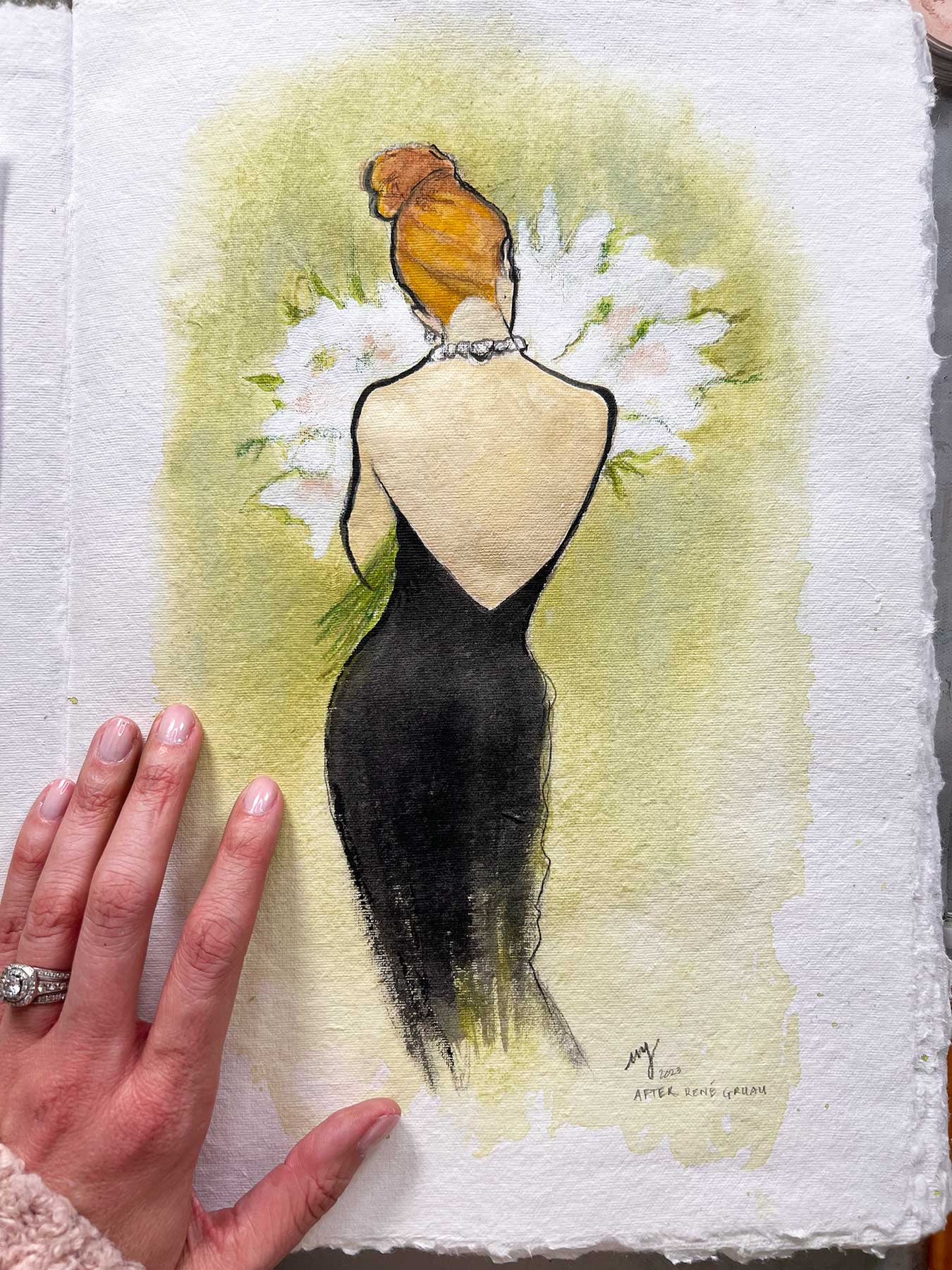
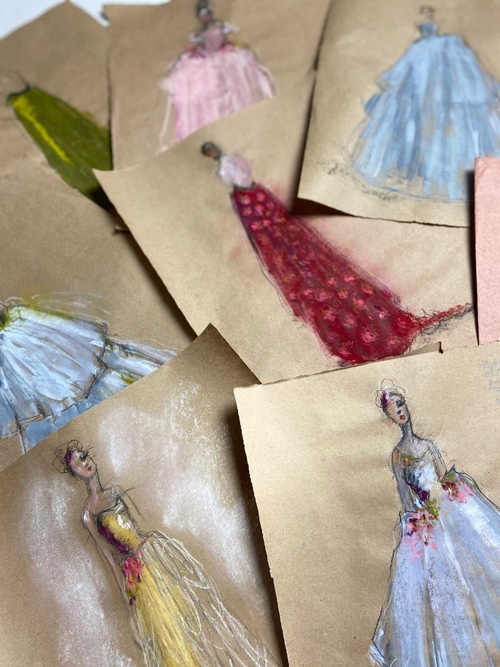
So let’s pretend we are fashion designers! Go ahead and create some beautiful fashion inspired sketches using whatever mediums you enjoy the most! Go bold and be confident! Refer back to your fashion preferences and use colors, textures and patterns YOU love. Have fun with this! If you want some expert guidance check out this wonderful lesson with our dear teacher, Renee Mueller!
Create a mixed media collage that incorporates images from fashion magazines, vintage ads, and other visual sources. Find colors, patterns and images that really resonate with you. Cut out images of clothing, accessories, models, and other elements, and arrange them on the page in a way that creates a cohesive, visually interesting composition.
Want some inspiration? Check out our Fashion Collage Pinterest board...
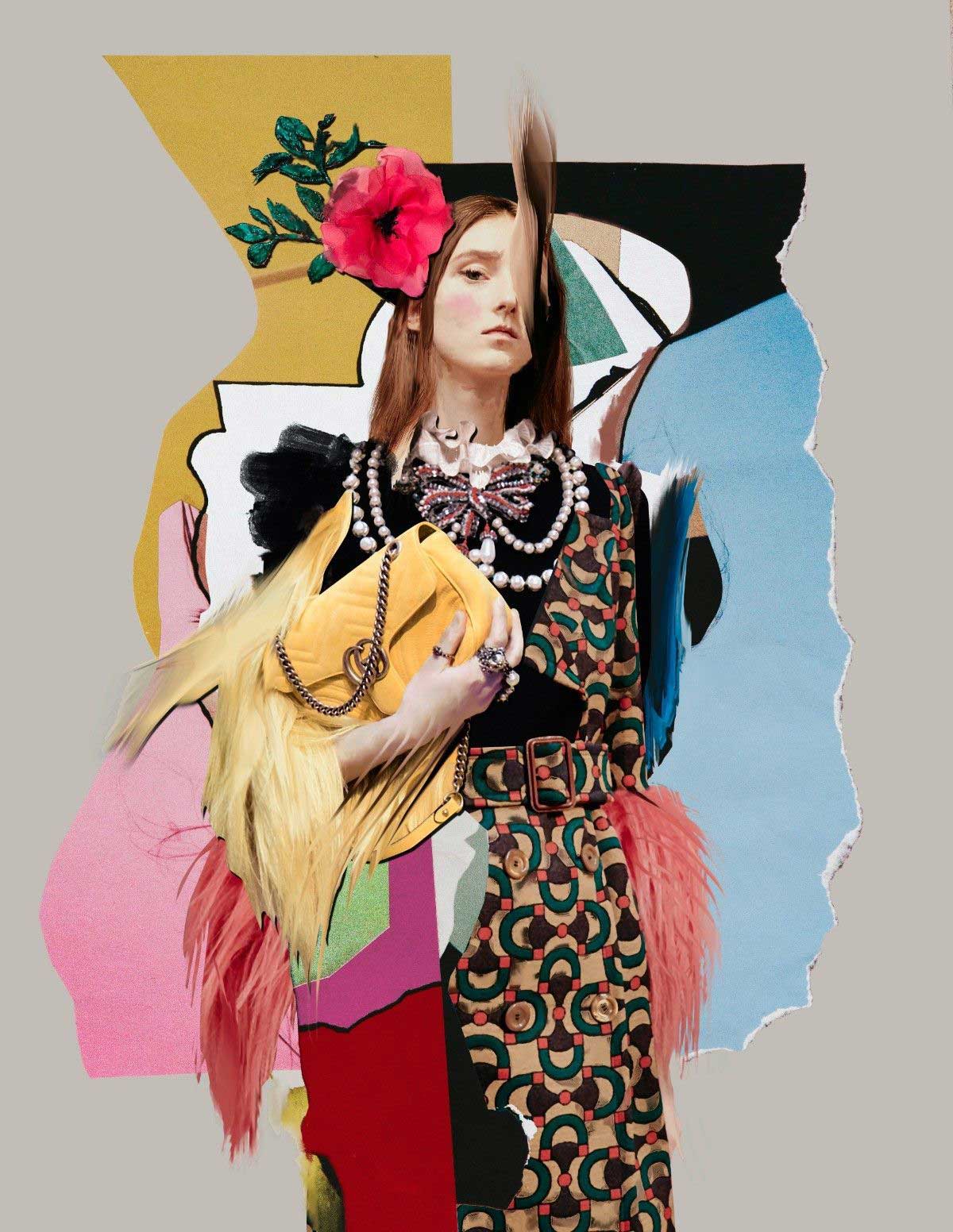
So excited to share this beautiful lesson from Natalie Eslick this month!
Natalie's passion is wildlife, and her art revolves around learning to capture their portraits in a classical realistic style.
With her love of graphite and colored pencil, along with oil paints and acrylics, she's never more than a step or two away from some sort of art supply and a substrate to push pigment around on.
In this lesson, Natalie discussed her sketchbook practices, honoring your artistic journey, and the process of skill building, all while having a conversation (in blue!) with a peregrine falcon.
I couldn't resist sharing this time lapse Mixed Media Master Study with you this month! I had so much fun doing this! You will hear me guide you through my process and also reflect on what this artist, René Gruau has to offer us.
As you know, I am a firm believer in studying Art History and learning from the amazing legacy of artists therein, so I hope you go ahead and try your own Master Study! René has hundreds (if not thousands) of illustrations and paintings to choose from so check out our Pinterest board for more inspiration!
Hope you enjoy!
xo,
Ivy

One of my favorite things to do is to curate inspiration. From Pinterest boards to books, resources, playlists and more - I love to share anything that might facilitate learning, expansion, and sparks of curiosity! Being an artist, we naturally crave these things so here are some of this month’s picks from me to you.
I had so much fun curating this list. I hope you enjoy!!
Here are just a few of our fantastic classes! I highly recommend checking them out if you haven’t already. Enjoy!